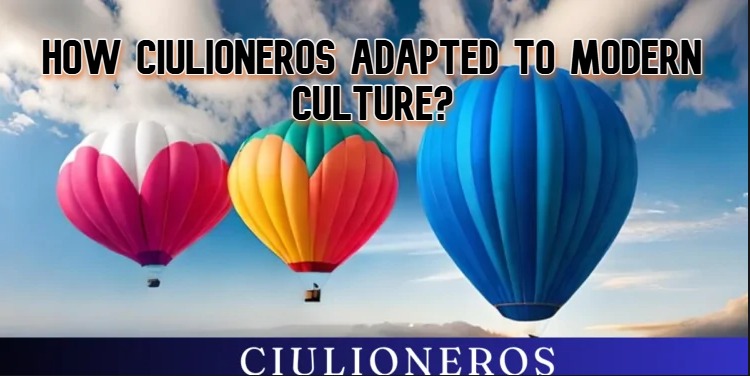Introduction
Ciulioneros represent more than just folklore, they are a living link between the past and present, blending tradition with modernity.
This article dives into the significance of Ciulioneros, exploring their roots, how they have evolved over the years, and how they remain relevant in today’s fast-paced world.
What Are Ciulioneros?

The Ciulioneros are a group of traditional folk performers deeply rooted in the cultural and historical heritage of various regions, particularly in rural Europe.
Their name stems from local dialects and carries symbolic meaning tied to agriculture, nature, and ancient rites.
Historically, Ciulioneros were responsible for performing rituals, dances, and songs that celebrated the agricultural cycle and honored the spirits of the land.
Cultural Identity and Local Pride
Ciulioneros are more than just performers—they are cultural ambassadors. In many regions, their presence symbolizes local pride, helping communities showcase their distinct heritage on both national and international platforms. By embodying unique local customs, Ciulioneros offer a glimpse into centuries-old traditions that continue to shape regional identities today.
Origins of Ciulioneros in Folklore
Ciulioneros have long played a pivotal role in traditional celebrations, especially those connected to harvests, solstices, and religious festivities.
These performers often wear symbolic costumes, incorporating masks, rustic garments, and handmade props, which add to the mystique surrounding their performances.
Rooted in Pagan customs, many of their rituals evolved with the rise of Christianity, intertwining folklore with religious practices.
Rituals and Symbolism in Ciulioneros Performances
Ciulioneros performances typically involve a variety of symbolic elements. Masks, often made from animal skins or carved wood, are essential, representing spirits of nature or ancestors.
The performances themselves are often accompanied by folk music, featuring traditional instruments like the flute, drum, and bagpipes.
Many of the dances performed are symbolic of the cyclical nature of life, death, and rebirth, further connecting the Ciulioneros to their agricultural roots.
Traditional Costumes and Their Meanings
Each piece of the Ciulioneros’ costume tells a story. From earth-toned garments that reflect agricultural ties to masks designed to ward off evil spirits, these visual elements carry deep meaning. Even the colors used—such as red for vitality or green for nature—are chosen carefully to honor specific symbols within their folklore.
How Ciulioneros Adapted to Modern Culture?

Over time, Ciulioneros have undergone a significant transformation, adapting to modern cultural and societal shifts while retaining their core elements.
Today, Ciulioneros has become a bridge between past and present, keeping ancient traditions alive while appealing to contemporary audiences.
From Rural Celebrations to Urban Festivals
What was once a performance reserved for rural communities has now found a place in urban festivals and celebrations.
As cities grow more interconnected, Ciulioneros have become ambassadors of their cultural heritage, performing at national and international festivals that celebrate folk traditions.
Modern iterations of Ciulioneros performances sometimes blend traditional music with contemporary sounds, introducing their rich history to a broader audience.
Media and Digital Influence on Ciulioneros Traditions
With the rise of social media, traditional art forms like Ciulioneros have found new platforms.
From YouTube videos showcasing their performances to Instagram profiles dedicated to preserving folklore, these modern tools have allowed Ciulioneros to maintain their cultural relevance.
Many younger performers have begun experimenting with integrating elements of pop culture into their performances while respecting the traditions handed down through generations.
Ciulioneros in the Age of Digital Storytelling
With digital storytelling tools such as blogs, podcasts, and cultural documentaries, Ciulioneros have found innovative ways to connect with a global audience. Platforms like TikTok and Facebook have helped younger enthusiasts document rituals, interview elders, and share behind-the-scenes moments—preserving authenticity while engaging new fans around the world.
The Role of Ciulioneros in Preserving Tradition

In an era of globalization, cultural heritage is often at risk of fading away.
Ciulioneros play a vital role in preserving and promoting folklore, ensuring that ancient customs are passed down to future generations.
Many cultural experts believe that the Ciulioneros are essential in safeguarding intangible cultural heritage, as they not only keep traditions alive but also educate younger audiences about their significance.
Education and Ciulioneros: Passing the Torch to New Generations
Many communities have established workshops and training programs to teach the younger generation about Ciulioneros traditions.
These initiatives ensure that the unique knowledge of dance, music, and rituals is passed down.
Schools, community centers, and cultural organizations work together to support these efforts, emphasizing the importance of preserving folklore in the face of modern challenges.
Integrating Ciulioneros into Academic Curricula
Some educational institutions have begun including Ciulioneros as part of their cultural studies curriculum. By studying their history, music, and influence, students gain a richer understanding of local and European folklore. These efforts support both cultural preservation and educational enrichment.
Ciulioneros and the Future: Balancing Tradition with Innovation
While Ciulioneros are firmly rooted in tradition, they are not resistant to change. As they continue to evolve, there is a delicate balance between maintaining authenticity and embracing innovation.
Whether through collaborations with modern artists, involvement in multimedia projects, or participation in contemporary art installations, Ciulioneros have demonstrated their ability to adapt without losing their cultural essence.
Ciulioneros Collaborating with Modern Artists
Recently, there has been a growing interest in blending Ciulioneros’ traditional performances with modern artistic expressions.
From collaborating with visual artists to integrating electronic music into their rituals, these performers have found unique ways to stay relevant.
This fusion of old and new provides a refreshing take on tradition, ensuring that Ciulioneros are not viewed as relics of the past but as vibrant contributors to the cultural landscape.
Global Recognition and Cultural Exchange
Ciulioneros have also participated in international folklore exchanges, where performers from different countries share their traditions. These events not only promote cross-cultural understanding but also elevate the visibility of Ciulioneros on the world stage, securing their place as vital contributors to global cultural diversity.
Conclusion
Ciulioneros have managed to transcend time, maintaining their deep connection to folklore while adapting to the demands of a modern world.
Their ability to bridge the gap between ancient customs and contemporary culture ensures that they will remain a vital part of cultural heritage for generations to come.
By preserving and sharing their traditions, Ciulioneros continue to enrich our understanding of the past while inspiring the future.



